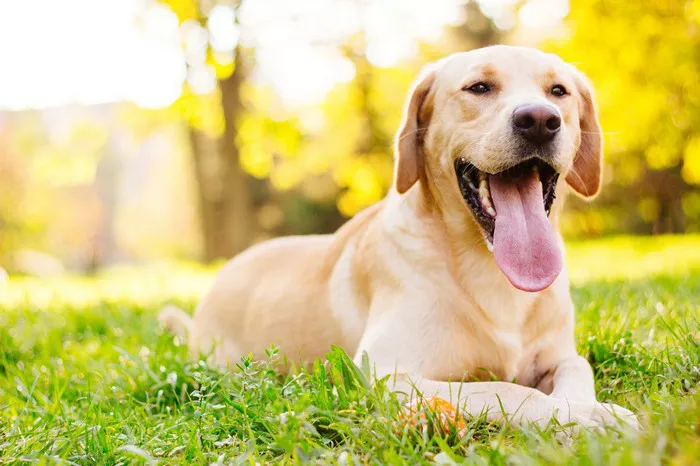Introduction
Labradors, known for their boundless energy and friendly disposition, may develop the habit of eating random objects when outdoors. This behavior poses potential risks to their health and requires focused training to instill discipline. In this comprehensive guide, we delve into the art of canine training, unraveling the step-by-step process to teach a Labrador not to eat randomly outside. From understanding the reasons behind this behavior to implementing effective training techniques, this guide is designed to help you foster responsible behavior in your beloved Labrador.
Understanding the Labrador’s Instincts
Natural Curiosity: Labradors are naturally curious dogs, and their propensity to explore their surroundings with their mouths is rooted in their instincts. Understanding this curiosity is key to addressing and redirecting their behavior.
Puppy Teething and Exploration: In younger Labradors, the habit of chewing and eating random objects may be linked to teething and exploration. Recognizing these stages of development helps tailor training approaches to address age-specific needs.
Food-Seeking Behavior: Labradors are known for their love of food. If they discover edible items outdoors, the desire to eat them can become a habit. Training a Labrador not to eat randomly outside involves redirecting this food-seeking behavior.
Setting the Foundation
Secure Outdoor Spaces: To train a Labrador not to eat randomly outside, begin by securing the outdoor spaces they have access to. Fenced yards or controlled environments limit their exposure to potential hazards and facilitate focused training.
Positive Associations: Create positive associations with outdoor spaces by engaging in structured activities. Play fetch, go for walks, or introduce puzzle toys to keep your Labrador mentally stimulated and less inclined to engage in random eating.
Consistent Daily Routine: Establishing a consistent daily routine contributes to a Labrador’s sense of security. Regular feeding times and walks create predictability, making it easier to manage and modify their behavior.
Training Techniques
Teach the “Leave It” Command: Introduce the “leave it” command as a foundational cue when training a Labrador not to eat randomly outside. Use treats to encourage them to move away from an object, reinforcing the concept of leaving things alone.
Offer Appropriate Chew Toys: Provide a variety of safe and appropriate chew toys for your Labrador. When they exhibit the desire to chew on random items, redirect their attention to the designated chew toys, reinforcing positive chewing habits.
Supervised Outdoor Sessions: During initial training stages, supervise outdoor sessions closely. If your Labrador shows interest in eating something they shouldn’t, use the “leave it” command and redirect them to a more suitable activity.
Understanding and Addressing Root Causes
Address Teething Challenges: For younger Labradors experiencing teething challenges, provide teething toys and cooling aids to soothe their gums. This addresses the root cause of their desire to chew on objects during the teething phase.
Distract with Interactive Play: Combat boredom-related eating by engaging your Labrador in interactive play. Toys that dispense treats or puzzle feeders provide mental stimulation and distract them from random eating behaviors.
Consultation with a Veterinarian: If the habit persists despite training efforts, consult with a veterinarian. Underlying health issues may contribute to the behavior, and a professional assessment ensures a comprehensive approach to address any medical concerns.
Overcoming Challenges: Patience and Consistency
Patience in Training: Training a Labrador not to eat randomly outside requires patience. Be consistent in applying commands and redirection techniques, understanding that behavior modification takes time.
Consistent Reinforcement: Consistency is the cornerstone of successful training. Reinforce positive behavior consistently, offering praise and treats when your Labrador responds appropriately to the “leave it” command.
Adapt to Individual Needs: Recognize that each Labrador is unique, and their response to training may vary. Adapt your approach to their individual needs, considering factors such as age, temperament, and past experiences.
Advanced Training Techniques: Elevating Discipline
Extended “Leave It” Duration: As your Labrador becomes proficient in the “leave it” command, work on extending the duration. Gradually increase the time they resist the temptation to eat a particular item, rewarding them for their self-control.
Off-Leash Training: Progress to off-leash training in controlled environments. This step ensures that your Labrador can resist the temptation to eat random items even when they have more freedom, showcasing their discipline.
Proofing Behavior in Different Environments: Train a Labrador not to eat randomly outside in various environments. Proof their behavior by practicing commands in different outdoor spaces, reinforcing their understanding of appropriate behavior across contexts.
Consistent Positive Reinforcement
Immediate Rewards: Timely rewards are crucial when training a Labrador not to eat randomly outside. Immediately reward them with treats and praise when they respond appropriately, reinforcing the desired behavior effectively.
Maintain Positive Energy: Your Labrador responds to your energy and enthusiasm. Maintain a positive demeanor during training sessions, creating an environment where they are motivated to engage in positive behaviors.
Celebrate Progress: Celebrate milestones and progress in behavior modification. Whether it’s successfully resisting the urge to eat a tempting object or responding promptly to commands, acknowledging their achievements strengthens the training process.
Conclusion
In the journey to train a Labrador not to eat randomly outside, you embark on a path of nurturing responsible behavior and strengthening the bond between you and your loyal companion. Understanding their instincts, creating controlled environments, and employing effective training techniques are the pillars of success. With patience, consistency, and a commitment to positive reinforcement, you can guide your Labrador towards responsible outdoor behavior, ensuring their safety and well-being. As you witness the transformation from random eating to disciplined behavior, relish the moments of shared accomplishment and the enduring bond forged through responsible canine training.


